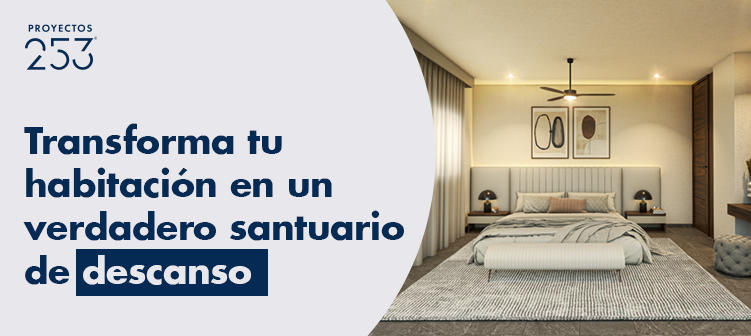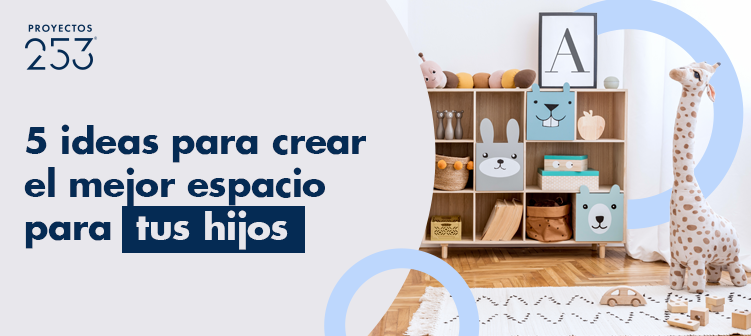Real estate development refers to a set of activities within the real estate market that encompasses various tasks: from land acquisition to planning, financing, construction, and management of real estate projects.
This discipline combines financial, legal, technical, and creative aspects to turn ideas into reality, transforming plots of land into communities and workspaces.
Why is real estate development important?
Real estate development is important Because it offers a wide range of opportunities, is a stable investment instrument and stimulates the local economy.
In the following sections, we'll explain each one in more detail and how Proyectos 253 can be your ideal partner in real estate projects.
Helps diversify your investment portfolio
Real estate development offers you an effective way to diversify your portfolioBy investing in commercial, residential, or industrial properties, you can mitigate risk and increase the stability of your portfolio.
Additionally, rental income and property value appreciation can provide consistent cash flow and capital appreciation opportunities.
Projects 253 helps you identify investment opportunities in the real estate sector to maximize your profits.
It gives you stability in real estate investments
Historically The properties have proven to be resilient to economic fluctuations, offering security in times of financial uncertainty.
This is supported by the constant demand for real estate, as people and businesses always need places to live, work, and trade.
Promotes local economic growth
The construction of new real estate projects creates jobs, stimulates local commerce, and increases tax revenue.
This translates into an attractive return on investment for investors, especially in the long term, and contributes to the well-being of society.
Types of real estate development

These are the main types of real estate development that exist:
- Corporate: They focus on creating spaces for companies and organizations. This includes the construction of corporate offices, business centers, and business parks.
- Commercials: It encompasses a wide range of properties dedicated to retail and service industries. These include shopping centers, restaurants, hotels, and other commercial spaces.
- Residential: focuses on building housing for the general public. This can include everything from single-family homes and condominiums to planned communities and apartment complexes.
- Industrialists: They focus on creating spaces for the production, storage, and distribution of goods, such as industrial parks, warehouses, manufacturing plants, and logistics spaces.
- Horizontal: In this type of development, properties are spread horizontally over a land area, such as single-family homes and communities that are distributed on a single floor.
- Verticals: It involves building tall, taking advantage of vertical space instead of expanding horizontally like apartment buildings, office skyscrapers, and multi-story residential complexes.
- Mixed: They combine different types of properties in a single area. For example, they include housing, commercial spaces, offices, and entertainment areas.
What is the process of real estate development?
The real estate development process involves a series of interconnected stages for the project to be successful in the market.
1. Initial planning

Here The project idea is conceived and its economic and legal viability is evaluatedMarket opportunities are identified and the type of property to be built is determined.
Preliminary plans are also drawn up, objectives are established, and a risk assessment is conducted. A multidisciplinary team, including architects, lawyers, and financial experts, is crucial for solid planning.
2. Land acquisition

After defining the project concept, the appropriate land is acquired.
This may involve purchasing existing properties or negotiating with landowners.The location and characteristics of the space are critical factors that will affect development.
3. Design and development of plans

At this stage, Architects and designers work on detailed project plans.
This includes architectural design, interior design, landscaping, and infrastructure planning. Local building codes and regulations must be adhered to.
4. Financing

Financing is one of the crucial aspects of real estate development. In this phase, Promoters look for sources of financing, which may include bank loans, private investors or equity capital..
A detailed budget is established that covers all costs, from land acquisition to construction and property marketing.
5. Construction

Once financing is secured and plans are in hand, construction of the project begins.
It involves the incorporation of contractors and construction supervisors, as well as compliance with deadlines and budgets. Construction quality is essential for customer satisfaction and project profitability..
6. Delivery and management

After the project is completed and sales or rentals have been closed, The units are delivered to the owners or tenants.
Property management is also a critical phase, as it involves maintenance, service administration, and meeting the needs of occupants.
7. Ongoing maintenance

After delivery, the real estate development enters a phase of ongoing operation and maintenance.
It covers tasks such as facility management, lease renewals, and adapting to market changes over time..
What are the key characteristics of a good real estate development?

These are the characteristics that define a good real estate development; you should consider them if you're looking for investment opportunities in this field.
Strategic location
This is influenced by the developer's ability to identify locations that offer high growth potential.
It is a very important factor because it guarantees That your investment is backed by a location that promises long-term profitability.
Efficient design
The project design must balance functionality with aesthetics. Efficient spatial distribution ensures that the development meets the needs of tenants or owners.
On the other hand, aesthetics increase the appeal to buyers and investors.
Sustainability
The projects that incorporate sustainable construction practices have a lower environmental impact and are increasingly valued.
In addition, they can also generate long-term savings and appeal to those seeking responsible investments.
Build quality
The selection of high-quality materials and compliance with the most demanding standards in the construction of the project protect your investment..
This translates into lower maintenance costs, which increases the project's profitability and demand.
Regulatory compliance
Real estate development must consider all legal and regulatory aspects, from building permits to environmental and zoning regulations.
With this you can be sure that the project does not come from dubious sources and The risks associated with possible legal sanctions or interruptions in development are minimized.
Long-term profitability
The long-term profitability of real estate development is critical for real estate investors and companies.
A project of this type offers investment return prospects supported by increasing property values.
Real estate development helps you multiply your money
This discipline will continue to be a great investment option, as it is a very stable option that withstands economic fluctuations.
For this reason, at Proyectos 253, we design unique real estate developments that stand out in the market. If you'd like more information, contact us and we'll talk.



